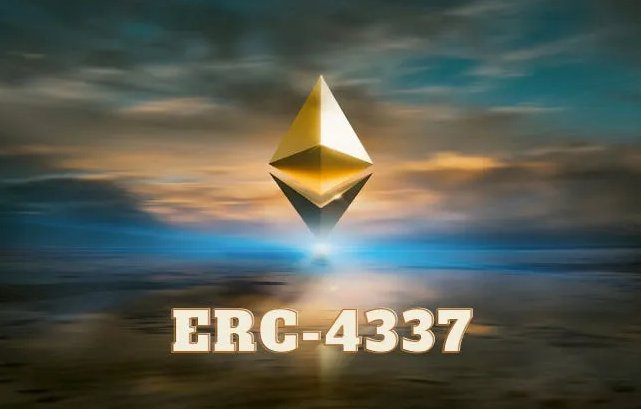Table of Contents
The first wave of NFTs in the summer of 2021 (commonly known as “NFT summer”) can be classified as rigid in function, expensive (both in price tag and due to their skyrocketing gas fees), confusing to obtain, weak in security, and limited in their blockchain of origin — which for the majority of mints were Ethereum.
After witnessing billions in sales, viral on-chain communities, congested networks, costly transactions, lost assets, and limited use cases, a shift is evident. This change is not confined to one blockchain like Ethereum or its traditional token standard (ERC-721). In the past year, diverse blockchains and new token standards have emerged, supporting the upcoming wave of blockchain-powered applications. Dynamic utility, reduced costs, and inventive possibilities for security, accessibility, and adoption signal a shift towards sustainability over hype. From BNB Chain to Solana and Polygon, from SBTs (soulbound tokens) to Ethereum’s latest upgrade, ERC-4337, the future of NFTs and wallets shows increasing innovation for developers, users, and the broader web3 landscape.
ERC-4337: An Essential Overview and its Significance
ERC-4337, or “Ethereum Request for Comment 4337,” introduces a smart contract standard for account abstraction. Contrary to public relations, it focuses on enabling individual Ethereum wallets to function as customizable smart contracts. This innovative concept facilitates user and developer-centric innovations by simplifying complexities in crypto wallets, such as network switching, cryptographic signatures, and private key management.
Account abstraction empowers users with innovative features, addressing challenges in web3 that hinder widespread adoption of decentralized applications. Exploring these features provides insight into the value they bring to the ecosystem.
The prospective impact of ERC-4337 on the evolution of web3
By providing developers and their applications with versatile, user-friendly, and user-friendly attributes, ERC-4337 demonstrates significant promise across various applications, extending beyond NFTs to encompass any facet of the web3 space reliant on tokenized assets and on-chain transactions (which constitutes a substantial portion).
From enhanced accessibility to reduced transaction expenses, user-friendly security elements, and heightened speed, ERC-4337 has the potential to attract more users to burgeoning segments of the blockchain industry, such as decentralized social applications. In these platforms, where tokenized content and on-chain identity play a pivotal role, the need for increased accessibility for communities to participate, leverage wallets, and cultivate audiences becomes more pronounced. Similar to any technological advancement that simplifies human creation and connection, ERC-4337 exhibits substantial potential in catalyzing a new era of innovation and widespread adoption.
Ryan Li serves as the Co-Founder of CyberConnect, the earliest and most extensive decentralized social network in web3, with a primary focus on constructing and expanding the next generation of decentralized social media platforms. A seasoned entrepreneur, Ryan has established several companies that have been acquired by leading entities in the decentralized technology space, including DLive, Lino Network, and SketchMe. Ryan consistently drives the adoption of platforms that afford users unrestricted access to content posting and monetization. He holds a Bachelor’s degree in Electrical Engineering and Computer Sciences from the University of California, Berkeley.
CyberConnect stands as web3’s earliest and most comprehensive decentralized social network, empowering developers to craft social applications that empower users to assert ownership over their digital identity, content, connections, and monetization channels. The latest V3 upgrade introduces a series of potent enhancements to propel the CyberConnect social network into a new era of multi-chain possibilities for web3 social.
V3 is meticulously designed to fuel the next phase of hyper scalability for web3 social decentralized applications (dApps) and deliver a social networking experience that mirrors the familiarity of web2. Its three foundational components include CyberAccount, an identity infrastructure compatible with ERC-4337; CyberGraph, a censorship-resistant database for documenting users’ content and social connections; and CyberNetwork, an efficient and scalable network aimed at globalizing CyberConnect.
Established by a team of serial entrepreneurs based in Silicon Valley in 2021, CyberConnect has already attracted more than 50 projects leveraging its platform to integrate social features into real-world applications. These applications span various domains, including community-owned social networks, marketplaces, content curation, discovery tools, and more. As of July 2023, the CyberConnect protocol boasts 1.2 million user profiles, with 400k monthly active wallets facilitating over 15.2M transactions in total. Additionally, more than 2,400 verified organizations have created their CyberProfiles to cultivate web3 native audiences. CyberConnect’s primary social application, Link3, boasts an impressive 940,000 monthly active users.
CyberConnect has garnered support from prominent investors such as Multicoin and Animoca Brands, along with other notable backers. Since its establishment, the platform has successfully secured over $25 million in funding.


